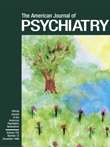Cognitive Substrates of Thought Disorder, II: Specifying a Candidate Cognitive Mechanism
Abstract
Objective:In part I of this series, the authors found that semantic knowledge and organization accounted for most of the variance in thought disorder in a group of chronic schizophrenic patients. In the present study, they examined a possible cognitive mechanism within the semantic system that might produce thought disorder.Method:Twenty patients with chronic schizophrenia and 21 normal comparison subjects were assessed on priming (the ability to respond to a stimulus word more quickly when it is preceded by a semantically related word than when it is preceded by an unrelated word). The patients were divided into subgroups with high (N=9) and low (N=11) levels of thought disorder. The word pairs in the priming paradigm differed in their degree of association but shared a categorical membership. The paradigm involved short stimulus onset asynchronies to maximize automatic processing and required pronunciation of words to minimize decision making. All subjects were also administered neuropsychological tests to assess language, executive function, real-world knowledge, and mental status. Results:Comparison subjects showed appropriate priming in stepwise fashion at the three different levels of word association, as did the patients with mild thought disorder. The patients with high thought disorder showed inhibited responses to high and medium associates compared with their baseline reaction times. Correlations between priming and cognitive variables were significant only with measures of semantic processing. Priming abnormalities were uniformly related to ratings of global thought disorder.Conclusions:These results suggest that aberrations in the automatic spread of activation or facilitation in semantic networks may be a candidate cognitive mechanism in semantic accounts of thought disorder. Am J Psychiatry 1998; 155: 1677-1684



